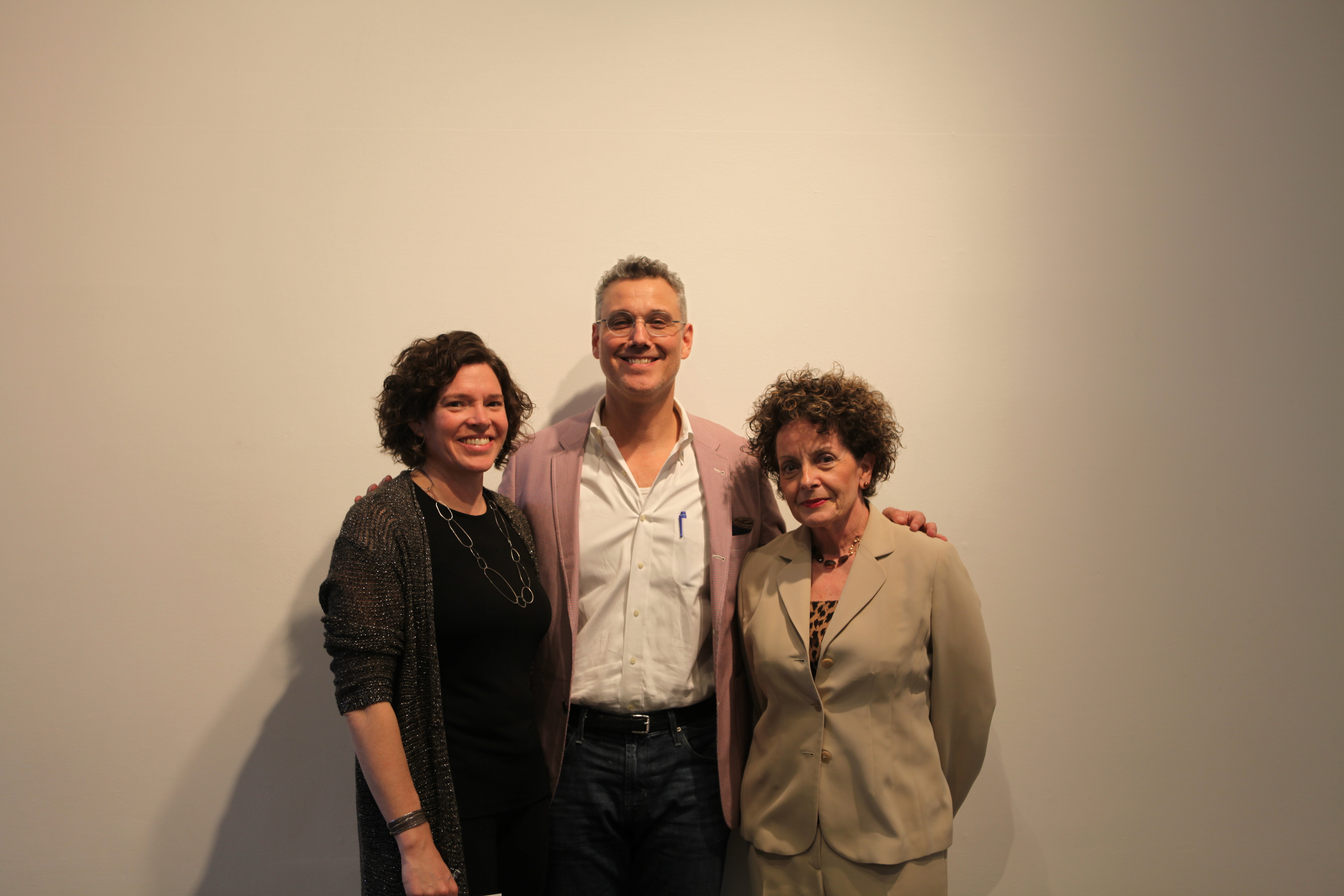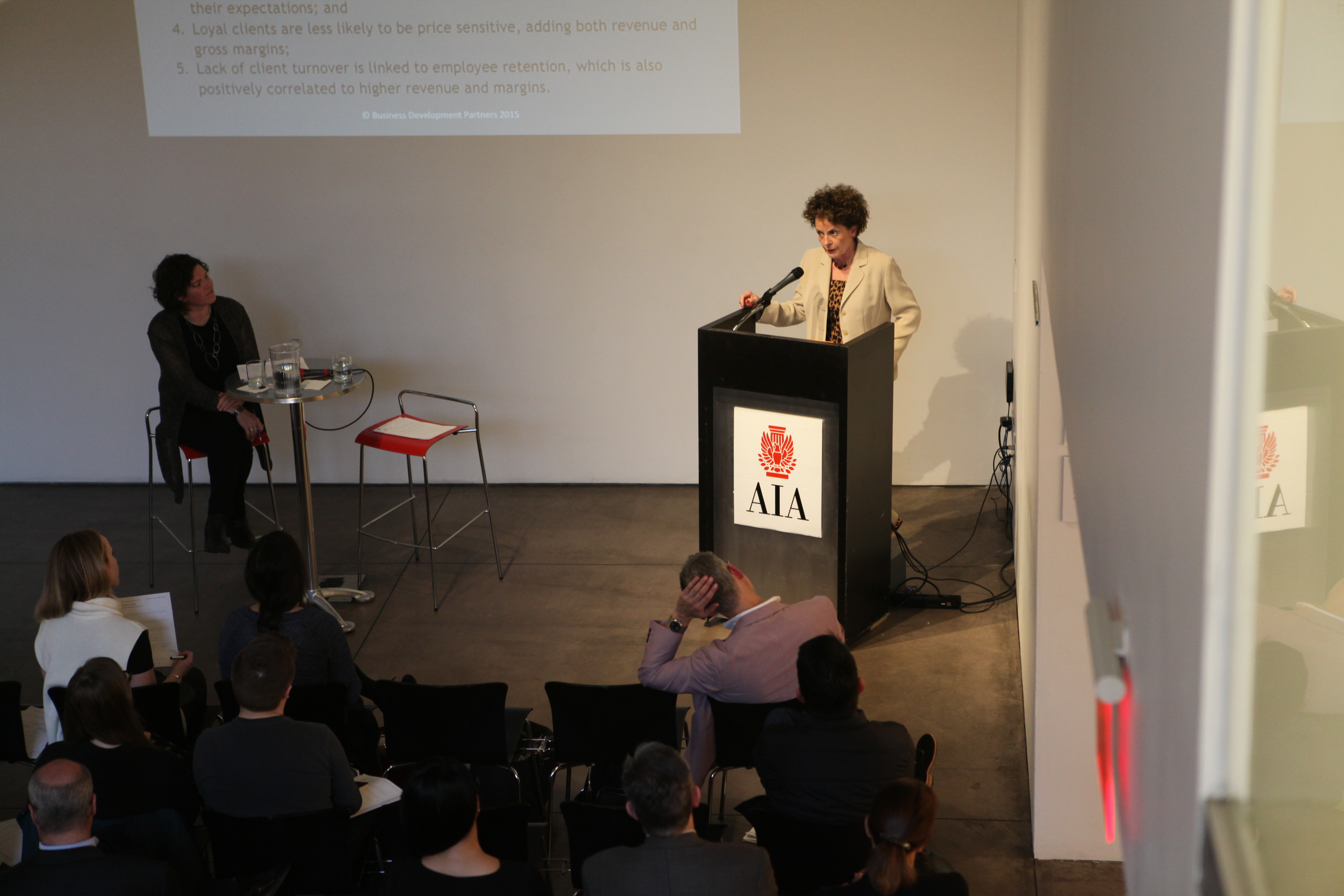by: Claire Rowell
On 04.13.15, the Transforming Architectural Practice program hosted Christine Filip, president of Business Development Partners, to discuss how to attract and sustain top clients through strategic differentiation. Structured as a master class, she encouraged the audience to rethink how they and their firms stand apart from competitors. Filip defines strategic differentiation as the process of personalizing business development, giving you better business ears, eyes, and financial results. More importantly, when your words and actions portray the unique benefits you deliver to clients, they have a reason to listen, engage more intimately, deepen the working relationship, and pay premium prices.
The session considered three differentiation opportunities: position, branding and content, and client feedback loop. Rife with audience participation, Filip’s presentation prompted attendees to share their current strategies on these topics, and advised making small changes for revolutionary impact.
Lessons learned included identifying your position to best stimulate business with your ideal client. Filip praised architectural firms that succeed in differentiating themselves as leaders in specific client sectors, from startups to healthcare institutions. She further articulated that these successes depend on research and focus, offering suggestions to differentiate well: concentrate your actions, immerse yourself in client networks, and communicate the crucial issues that are top-of-mind, both today and on the horizon.
A lackluster position not only closes the door to a client choosing you, but it undercuts any rationale for paying premium prices. Think like a client: Do you pay premium prices to a mediocre, fuzzily-defined vendor for a so-so product? The heart of a good position is focused action and communication on all levels, through branding that portrays your knowledge of, and stake in, the specific market segment(s) in which you wish to build business.
Filip spent her formative years as a marketing specialist at IBM during the THINK campaign, and was quick to define the “brand” buzz. A brand is a consistent theme in communications and actions representative of the differentiation factors of you and your firm. Branding through communication and content delivery must speak to client needs in lucid, concise ways. Rather than spending a lot of time with fellow architects and designers, Filip recommends speaking at client-attended seminars and industry conferences where the audience sees your expertise and personality in action – the latter being the stronger influencer in the firm selection process. Furthermore, writing for magazines, white papers, blogs, etc. that your client base reads shows future clients you’re a service area expert who understands their current and future needs.
Our industry often seeks and receives feedback from peers, industry excellence awards, and architecture and design media. Filip asked the audience if their firms conduct client feedback reports after an engagement. In the group of more than 50 people, only a few raised their hands. Filip stressed that successful communications need bilateral evaluation, and firms can differentiate themselves by actively seeking client evaluation. This can be accomplished through face-to-face evaluations of the working relationship and projects completed, along with a discussion of the client’s business goals going forward. Asking for client evaluation not only provides valuable design and business feedback, but also helps measure the impact of your differentiation and business development efforts. These interviews often lead to new work and new contacts, even in the presence of issues to be resolved.
As clients are constantly changing, continuous measurement and improvement is key to differentiation, benefiting the industry, your business, and financial returns. Filip concludes that, whether you are starting a business or have a history of success in your market, it is important to take time out each year to redefine how you are different to refine your business objectives. These efforts will result in attracting highly qualified clients to your firm, shortening the time to a sale, and bringing in revenue faster at better than average prices. When clients are satisfied with the work your firm produces, they become loyal, yielding more work and creating referral sources to new clients. Loyal clients are less likely to be price-sensitive, and continued relationships come with familiar, pre-defined expectations, driving down production expenses and increasing revenue and gross margins.
As service providers, we have two paths to differentiation with very different ends – low cost and strategic differentiation. Because architecture and design industries labor to market and provide services, differentiating the value of each hour of service is crucial. By using differentiation tactics to stay above average, firms can better attract top clients, maintain these relationships, and generate new business. If architects and designers put in the effort to understand themselves and their clients (existing and prospective) equally well, their businesses will benefit.
Claire Rowell is a Workplace Anthropologist at PLASTARC, a social research, workplace innovation, and real estate strategy firm serving tenants and owner-occupiers, and collaborating with architecture and design firms. PLASTARC is a portmanteau of plastic and architecture representing a focus on engaging architecture to be more flexible, dynamic, and fun through social research and analytics.
Event: Differentiate: Turn Your Strengths into Strategy, third in series Transforming Architectural Practice 2015
Location: Center for Architecture, 04.13.15
Speaker: Christine S. Filip, Esq., President, Business Development Partners
Organizer: AIANY Professional Practice Committee, AIANY Marketing and Communications Committee, AIANY Women in Architecture









